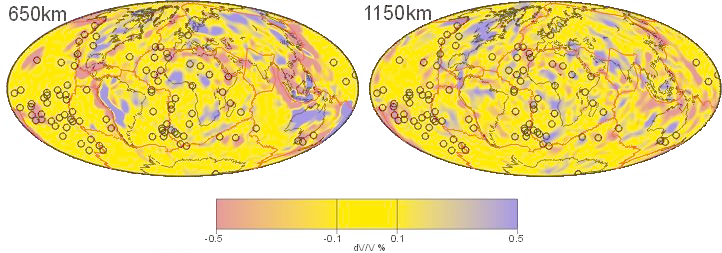

Typically a simulation is initially developed in a very simple form before being elaborated into more a more complex form. The 2D simulation is both easier to program and interpret.
Also medical scans tend to be viewed as 2D slices but when this is done the 3D shape and structure is lost. Although this is changing medical visualization still does not take full advantage of interactive visualization techniques.
Here we show a simple example that demonstrates how moving to 3D can be beneficial. The example used is that of seismic tomography of the whole Earth, a 3D dataset; however the original visualizations were of 2D radial slices. Visualizations were developed that show the data in 3D.

2D depth slices of whole Earth seismic tomography data. It is difficult to understand features that pass through several depth layers using this visualization method.
The 3D visualization turned the data into a 3D geometrical structure, made up of triangular and quadrilateral prisms. These geometrical structures can be sliced, isosurfaced and have transparency applied to them so that internal structures can be seen.
Last updated by Joanna Leng on the 14th of August 2011.